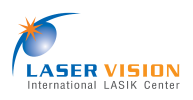Laser Vision
How to Care for Your Eyes After LASIK Surgery
How to Care for Your Eyes After LASIK Surgery
After undergoing LASIK surgery, proper eye care is essential to ensure a quick recovery. With the use of cutting-edge technology like NanoRelex and NanoLASIK from Switzerland, which employ low-energy lasers, post-LASIK side effects have been significantly minimized. Laser Vision, has been providing over 25 years of experience in LASIK procedures, guarantees a precise and safe process to promote clear and healthy eyes.
Dealing with Initial Post-LASIK Temporary Side Effects:
After LASIK, patients may encounter short-term side effects that vary among individuals. Common early side effects including:
Eye Irritation: Often occurring within the initial 24 hours after LASIK, this can be mitigated by getting sufficient rest and using cold compresses or prescribed eye drops.
Blurry Vision: Typically experienced during the first week, this is attributed to dry eyes resulting from the LASIK procedure. Vision gradually improves as the cornea heals.
Nighttime Glare: This may present as starbursts or halos but is usually temporary, diminishing as the cornea smooths over time. If night driving is affected, it's advisable to avoid it temporarily.
Dry Eyes: LASIK can temporarily reduce tear production, leading to dry eyes. The discomfort can be relieved with artificial tears, and it usually improves with time.
Addressing Other Concerns:
Should you encounter any of the following issues, it is crucial to seek immediate specialist assistance:
Eye Pain or Severe Irritation
Increased Swelling or Redness of the Eyes Beyond the First Day
Sudden Vision Loss or Abnormal Eye Discharge
Any Eye Injury Following LASIK Surgery
Conclusion:
Your vision is a valuable asset, and after LASIK, it demands careful care and attention. Opting for a reputable LASIK center such as Laser Vision, known for advanced technology, standardized procedures, and extensive experience, all of which is vital to ensure a full and successful recovery.
Laser Vision
All About Tears
All About Tears
Natural tears, produced by our tear glands, serve several crucial functions:
Moistening the cornea and conjunctiva, providing essential hydration.
Smoothing the cornea's surface for clear vision by maintaining its optical properties.
Supplying nutrients and oxygen to the cornea while removing waste products.
Containing mild antimicrobial components to prevent eye infections.
Natural tears play a significant role in maintaining eye comfort and visual clarity. When our natural tears fail to keep our eyes adequately lubricated, a condition known as "dry eye" can occur, leading to discomfort, redness, itching, and other eye-related issues.
Artificial Tears
Artificial tears are products designed to replace or supplement natural tears in individuals with inadequate tear production or experiencing dry eye syndrome. They are used to lubricate and hydrate the cornea, relieving discomfort and irritation caused by wind and glare.
Artificial tears come in two main types:
Preservative-Free Artificial Tears: These are usually single-use vials or unit-dose containers. They lack preservatives and are recommended for those with sensitive eyes or those who need to use them frequently.
Artificial Tears with Preservatives: These come in multi-dose bottles. They contain preservatives that help prolong the product's shelf life but may be less suitable for individuals with sensitive eyes. They can generally be used up to five times a day.
Both types of artificial tears are available in liquid, gel, or ointment forms. The choice of artificial tears depends on the severity of dry eye symptoms and an individual's specific needs.
Using Artificial Tears
Wash Your Hands: Clean your hands thoroughly before applying artificial tears.
Shake the Bottle (if necessary): Some products may require shaking before use. Follow the instructions on the label.
Tilt Your Head Back or Lie Down: Look upward or lie down with your head tilted back.
Gently Pull Down the Lower Eyelid: Using one hand, pull down the lower eyelid to create a small pocket.
Apply the Drops: Use your other hand to apply the drops into the pocket formed by the lower eyelid, avoiding contact with the eye's surface.
Close Your Eyes Gently: Close your eyes gently for at least 30 seconds after applying the drops. This helps distribute the artificial tears across the eye's surface.
Blot Excess Liquid: If necessary, blot any excess liquid with a clean tissue.
Storing Artificial Tears
Store artificial tears in a cool place with a temperature below 30 degrees Celsius (86 degrees Fahrenheit).
Do not use artificial tears if the color or clarity of the solution changes.
Do not use artificial tears if they become cloudy.
Frequently Asked Questions
Question: Is it necessary for everyone to use artificial tears? Answer: Artificial tears are a type of eye drop designed to provide relief and moisture to the eyes. They are often used by individuals with dry eye symptoms or those who experience discomfort or irritation in their eyes. If you are experiencing such symptoms, artificial tears can help provide relief and comfort.
Question: Who should use artificial tears? Answer: People who may benefit from using artificial tears include those with dry eye symptoms, older individuals (as tear production may decrease with age), women going through menopause, and those who work extensively with computers. It's important to consult with an eye care professional for personalized advice.
Question: How often can artificial tears be used? Answer: For most users, artificial tears can be used up to four to five times a day. However, the frequency of use may vary depending on individual needs and the specific product. Consult with a healthcare professional for guidance tailored to your situation.
Question: Can artificial tears be used for LASIK recovery? Answer: Yes, artificial tears are often recommended during the initial recovery period after LASIK surgery. They can help alleviate dry eye symptoms that may occur during the first 3 to 6 months post-surgery (in most cases only 1-2 months). Your eye surgeon will provide specific instructions on their use.
Location
Laser Vision International LASIK Center
49/5 Laser Vision Building Ratchadaphiseak 48 Alley Ratchadaphiseak Rd. Ladyao Subdistrict Chatujak District Bangkok 10900 Thailand



